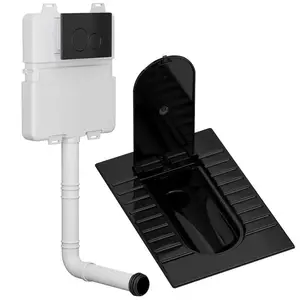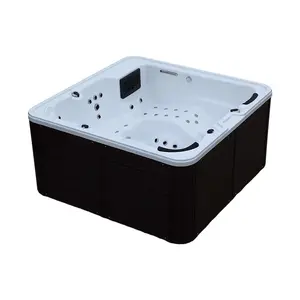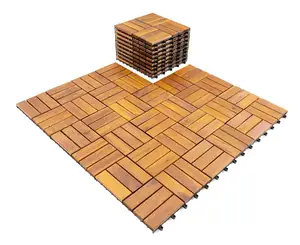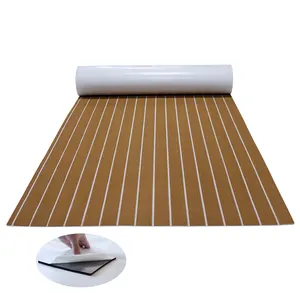Popular in your industry
































































Top categories
About sidewalk stepping stones
Introduction
Welcome to the world of garden paths, where functionality meets aesthetics. Sidewalk stepping stones, an integral part of this realm, offer a practical and visually appealing solution to navigate your garden. They connect different parts of your landscape, ensuring easy movement without damaging plants or soiling shoes. This article delves into the importance of garden paths, the basics of sidewalk stepping stones, the various types available, and how to design, maintain, and care for your stepping stone path. Whether you're a seasoned gardener or a beginner, this comprehensive guide will equip you with the knowledge to transform your garden path into a work of art.
Understanding the Importance of Garden Paths
Garden paths, such as sidewalk stepping stones, are essential for free movement in the yard without soiling shoes or damaging plants. They should be designed to logically connect different parts of the landscape and be accessible in all weather conditions. A well-planned garden path enhances the beauty of the garden while providing practical benefits. Whether it's raining or sunny, a well-maintained path ensures easy navigation through your garden.
The Basics of Sidewalk Stepping Stones
Sidewalk stepping stones are a simple, cost-effective way to add charm to your landscape. The style of stepping stone should complement your home's architecture. If your exterior walls feature keystone, brick, or faux rock, incorporate the same texture and color into the stepping stones. Ensure the surface has enough texture to prevent slipperiness when wet. The stones should be well above the sand and level with each other. Proper leveling allows water to slide off the stones and away from your house, especially when placed close to an exterior wall.
Types of Stepping Stones
Stepping stones are a versatile and cost-effective option for creating garden paths. They come in various types, each offering a unique aesthetic. Railroad ties, for instance, can be cut into pieces to form rustic stepping stones. Bricks, grouped along your path, can serve as charming stepping stones. Old telephone poles can be repurposed into sturdy stepping stones. Shaped paving stones, mosaic stepping stones, and flagstones are other popular choices. Tiles, especially large outdoor ones, can be repurposed as stepping stones. Lastly, DIY concrete stepping stones allow for personalization and creativity in your garden path design.
Natural Stones
Natural stepping stones are a versatile and budget-friendly option for garden paths and walkways. They come in various textures, shapes, sizes, and colors, allowing for countless arrangements and patterns. Local natural stones such as limestone, slate, or bluestone offer unique textures, colors, and patterns that enhance the overall aesthetic of your outdoor space. They are known for their longevity and durability, ensuring your stepping stones will withstand the test of time. Opting for local natural stones also supports local businesses and reduces the environmental impact of long transport distances.
Concrete Stepping Stones
Concrete stepping stones are a popular choice for garden paths due to their durability and versatility. They can be easily made at home, allowing for a personalized touch. The process involves mixing concrete in a large container, pouring it into a mold such as a pie tin, and adding embellishments like stones or marbles. A piece of chicken wire can be added for extra strength. Once set, these stepping stones can be arranged in your garden to create a unique and functional path. Remember, the concrete should resemble thick cake batter for optimal results, and the stepping stones should be leveled for a more even look.
Recycled Materials
One excellent example of using recycled materials for stepping stones is the eco-friendly stepping stone available on Alibaba.com. This stepping stone is made from recycled rubber, making it an eco-friendly choice for your garden path. The dimensions of each stone are 12" x 12" x .75" H, perfect for creating a comfortable walkway. These stepping stones not only enhance the aesthetic appeal of your outdoor space but also contribute to environmental sustainability.
Designing Your Garden Path
Designing your garden path with stepping stones can be an art. Consider the layout, whether it's a straight line, subtle curves, or a criss-cross pattern. The choice of materials also plays a significant role. You can use natural stones, concrete, or even recycled materials. The size and shape of the stones can vary, from large unhoned stones for a natural look to intricate flagstone paths. Incorporate elements like plants to fill the gaps between the stones, adding extra dimension and visual interest. The design of your path can evoke different vibes, from a Mediterranean feel to a modern minimalist style.
Choosing the Right Layout
Choosing the right layout for your garden path is crucial. You can opt for a direct path or take a wide turn towards the gate to make the journey last a bit longer. The layout can also cleverly morph into a retaining wall as the driveway descends to the side yard. A traditional gravel path can be dissected with a random pattern of stepping stones that provide a landing spot to stop and look around. The use of large pavers lends a clean and uncluttered look versus using smaller stepping stones. Remember, the layout should guide pedestrians around the grounds and provide a durable and attractive trail.
Incorporating Plants and Other Elements
Incorporating plants and other elements into your garden path can add a unique touch. Surrounding your stepping stones with vibrant pebbles or allowing greenery to grow between the stones can create an organic appearance. For a more whimsical feel, consider lining up stones in a skinny, winding path. Solar lights can also be added around your stepping stone footpath, making it functional both in the daylight and at night. For a bold contrast, set darker stepping stones in lighter pebbles or vice versa. Remember, the design of your garden path is totally up to you.
Maintaining Your Stepping Stone Path
Maintaining your stepping stone path is crucial for its longevity. Use a high-quality sealer to protect the stones from wear and tear, and the elements. Select cleaning products designed for porous stone and masonry to prevent damage. In winter, use concrete-safe ice melt to avoid corrosion. Regularly remove leaves and promptly clean spills to prevent staining. Repair broken stones promptly to avoid safety issues. Lastly, a yearly power wash, under the right conditions, can refresh your path and clear away dirt.
Cleaning and Repair
Maintaining your stepping stone path is crucial for its longevity. Regular cleaning is minimal but significant. Sweep off leaves to avoid stains and hose off dirt. For stubborn stains like food, beverage, oil, or grease, use warm water and dish soap. For rust stains, professional products available on Alibaba.com can be used. Avoid strong acids and wire brushes. If needed, consider sealing your stone walkway to make it easier to clean and more stain-resistant. Always choose the correct sealer for your surface.
Seasonal Care
Seasonal care is crucial for maintaining the beauty and longevity of your sidewalk stepping stones. In spring, use a weed killer to prevent weeds from becoming a nuisance. During fall, remove leaves from your walkway at least once a week to prevent staining. In areas with high freeze/thaw conditions, protect your stones from water damage. Finally, a yearly power wash, preferably in spring when temperatures are above 50 degrees Fahrenheit, can help clear away dirt and refresh your walkway.
Conclusion
In conclusion, sidewalk stepping stones are a versatile, cost-effective, and aesthetically pleasing solution for creating garden paths. They come in various types, including natural stones, concrete, and recycled materials, each offering a unique aesthetic. Designing your garden path with stepping stones is an art that involves careful consideration of layout, materials, and additional elements like plants. Maintenance, including regular cleaning and seasonal care, is crucial for the longevity of your stepping stone path. By understanding these aspects, you can create a garden path that not only enhances the beauty of your outdoor space but also provides practical benefits, ensuring easy navigation through your garden in all weather conditions.


































